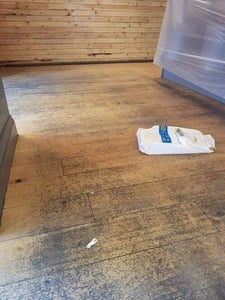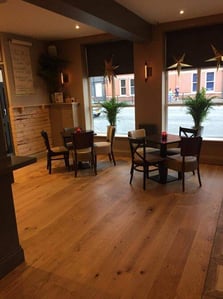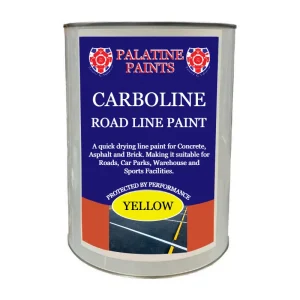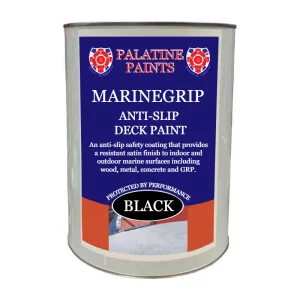
Floor varnish…a spotlight on customers’ projects. Why? We relish the chance to explain a bit about a particular coating, but we also love the chance to show you some of our customers’ fabulous projects. What better way to see a product in action?
Why use a varnish on wood?
Firstly, why use a varnish on wood? Varnish allows you to show some of the natural colour and grain of your wood whilst giving a durable protective coating. Varnished wood will usually resist knocks and spills to keep the surface looking good. As well as giving a smooth coating, varnish penetrates the wood slightly, filling the pores. This helps to keep dust from settling into the wood grain, making it easier to keep clean.
You can also apply varnish onto metals to give a glossy, protective finish. Many people also apply a coat of varnish over a previously painted surface for extra gloss or protection.
What is varnish?
Varnish is really just paint without the pigment applied to it. A simplistic view is that varnish is made up of 3 main components: oils, resins and solvents/thinners.
- Oils – drying oils ( (see our article on wood oils here) cure and harden when exposed to the air. The type of drying oils used and ratio of oils to other components contribute to the different properties of various varnishes. These might include: ‘glossiness’; flexibility; durability and even colour. Oils themselves vary in colour, so can affect the final tint of the varnish.
- Resins – resins form the binding element and the type of resin used will also affect the qualities of a varnish. These include: adhesion; flexibility; strength; body; glossiness and durability. Varnish can be created using natural resins or synthetic resins. Natural resins are obtained from plants, trees, even insects, some examples being, balsam, pine resin and shellac. Synthetic resins are industrially produced, examples being: polyurethane; epoxy; acrylic; alkyd and silicone.
- Solvents – give varnish the liquid consistency needed to facilitate application. The solvent then evaporates leaving a hard coating. Note the solvent in a water borne varnish is water while in a solvent or oil borne varnish it is oil or alcohol based.
In the Spotlight: Polyurethane Varnish
Polyurethane Varnish is known for the tough surface it provides. Our
polyurethane floor varnish is especially formulated to withstand heavy pedestrian wear and tear. Polyurethane varnish has good resistance to mild chemical spillages. As a rule Polyurethane Varnish does not yellow as much as some other varnishes. Versatile and easy to use, this varnish is extremely popular for both homes and business as it’s great for stairs, floors, table tops, doors, windows and cabinets. It can also be applied by brush, spray or roller whereas other varnishes are often restricted to brush application.
We have some great local businesses here in Lancashire. Here are two examples of businesses which have used Palatine Paints’ polyurethane varnish with great results.
Wigan Roller Rink “We are wearing sunglasses”
Wigan Roller Rink is a vibrant indoor roller rink in Wigan, Lancashire. The largest indoor roller rink in Europe, it also boasts a licensed bar, a cafe and a shop selling some cool urban skate gear. Always busy, with skate parties, skate fit and both family and adult sessions, it’s important that the rink is kept in tip top condition. Enter Palatine Paints Polyurethane varnish with its special anti slip version. In this case, the floor varnish does need re-applying every so often. So at a quiet time on a Monday morning, they got to work on the varnishing. The pictures and their social media post quotes say it all…
“Great start to the week. Monday morning workout. 18 cans of varnish, 18000 square foot of wood. 6 people, 6 rollers, 3 buckets. And we are wearing sunglasses. Hit it.”


The Lock Cocktail Bar, Leigh
The Lock, is a buzzing cocktail bar in the heart of Leigh, Lancashire. Offering cocktails, beer and wine with a stylish decor, the floor takes a lot of foot traffic! In need of a sprucing up, the existing wood flooring needed updating. Looking for a contemporary matt/satin finish rather than a high gloss, the customer opted for Palatine Paints’ Polyurethane Eggshell Varnish. After sanding down and applying the eggshell varnish, the cocktail bar now has a stylish and elegant look that matches its vibe perfectly. The before and after photos demonstrate the success of this varnish choice.






The newly sanded and varnished floor with its eggshell finish, perfectly matches the stylish image the customer wanted.
How to Apply Polyurethane Floor Varnish
- Sand the floor to give a smooth surface, ideally, taking it back to the bare wood
- Ensure the area is then completely cleared of dust and is well ventilated
- Apply a thin coat of varnish using a fine brush or solvent resistant, microfibre roller in the direction of grain
- Two coats are usually sufficient
See
here for more details of Palatine Paints Polyurethane Varnish or to buy online.

